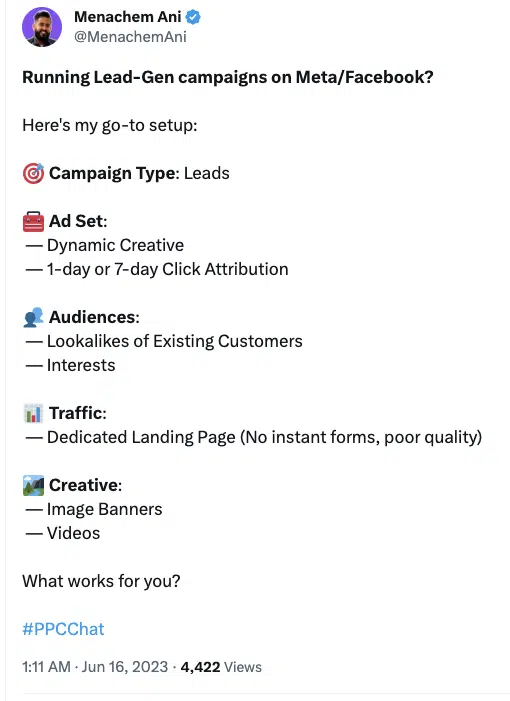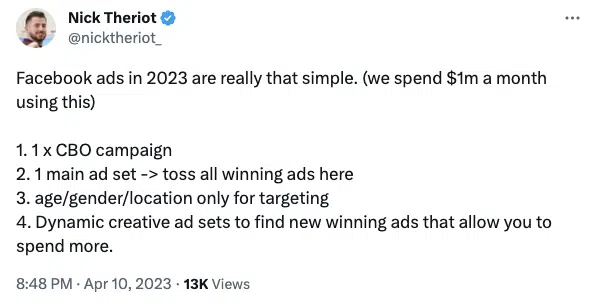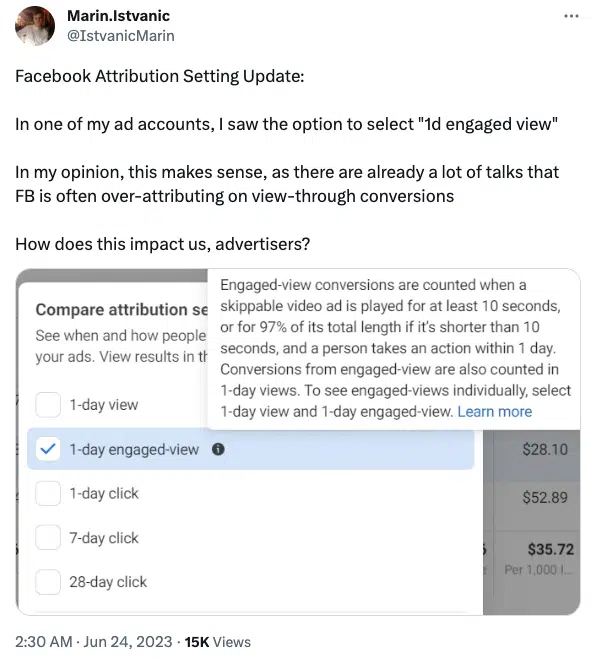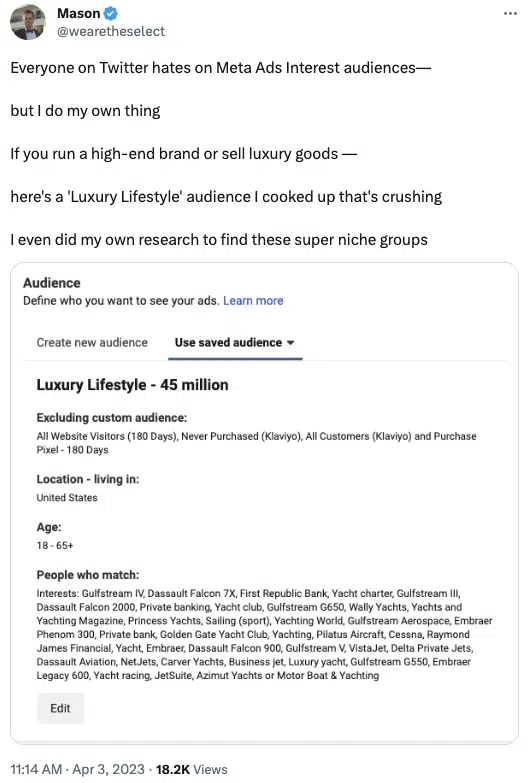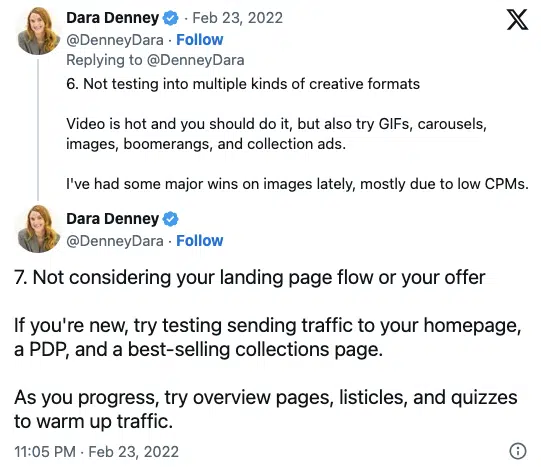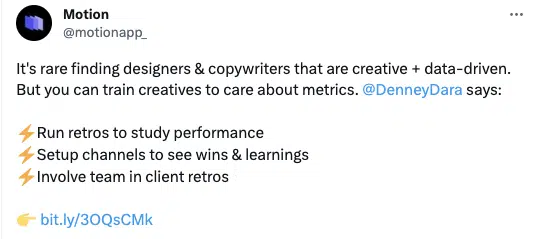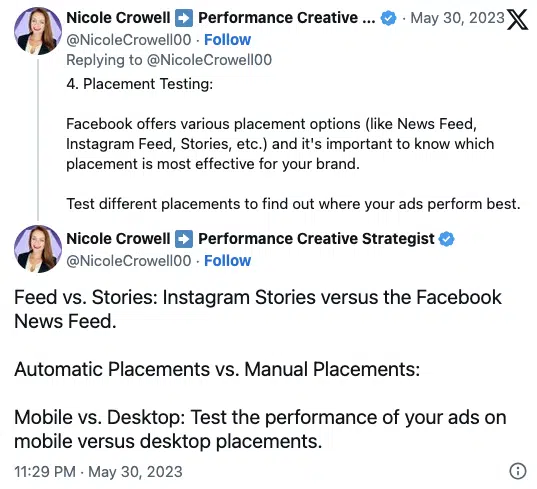How to use Meta Ads for lead generation: A 9-step guide
Advertising on Meta isn't just for ecommerce. Here are nine things to consider when running lead gen campaigns on Facebook and Instagram.
When you think of Facebook and Instagram Ads, you tend to think of ecommerce.
Snacks, beverages, gadgets, lifestyle products, apparel – cool stuff that catches people’s attention, sold directly to consumers.
But that doesn’t mean you can’t use Meta Ads for lead generation.
From B2B tech companies to professional and local services, there’s no reason you can’t use the world’s largest social network to generate a pipeline for your business.
Here are nine things to consider when running a paid social media campaign on Facebook and Instagram.
1. Campaign type
Every seasoned advertiser knows you’ll get visitors, and not many conversions, if you run traffic campaigns on Meta.
So the first step is basic but critical: Make sure you opt into a conversion campaign with the pixel firing if you want to generate leads.
The conversion action should be set to target “Leads.”
Meta’s algorithm may not be as complex as Google’s, but it’s still incredibly sophisticated and will find conversions based on your targeting.
2. Standard vs. dynamic creative
You can run a standard creative campaign, which includes several ads within one ad set. The system then decides which ad to serve at a given moment.
In our experience, toggling dynamic creative is the way to go.
It works much like Google’s responsive search ads in that it’s a single ad unit, but you’re adding many image, video and copy assets.
The system then mixes and matches these to find winning combinations.
This approach is far better in bringing down your cost per lead and increasing your conversion rate, so there are a few situations where we don’t recommend dynamic creative.
3. Attribution
In terms of attribution, you want to avoid view-through conversions. Typically, one day is enough with lead generation on Meta because you ask them to fill out a form.
It’s unlike ecommerce, where it could take another 10+ days until that person decides to purchase. You can also use a seven-day click model.
View-through conversions tend to over-report, in general, because everyone will see the ad. (This is not as much of a problem for lead-gen as with ecommerce.)
4. Audiences
For Facebook lead generation campaigns, there are some considerable differences for audiences.
With ecommerce nowadays, all the “gurus” will tell you to go broad, allow the system to do the targeting, and avoid using audiences.
That does work well, and we have seen success with that approach in lead-gen, too – if the account has a healthy amount of data on the pixel and the system knows who to target.
But if you’re starting from scratch or work in B2B where the audience segmentation can be very nuanced, I find that using lookalikes of your existing customers works extremely well. So upload your customer list and target 1-3% lookalikes.
If you don’t have even that – say the company is new in addition to the ad account – interest stacking works well.
We’ll create one ad set and layer on many specific interests.
In the case of a business that insures expensive home fixtures, we might target people ages 21-60 (layer one) who work in contracting or interior design (layer 2) and are interested in certain trade publications (layer 3).
So you’re helping the system find those people. Again, if you have a lot of data on your pixel, you could let go of this and allow the system to target freely.
But I find that for lead-gen, that’s not as easy as ecommerce because there’s no clear conversion value. In a new account, you don’t have that data right away.
5. Forms and landing pages
I recommend having a dedicated landing page rather than instant forms because the latter typically generates poorer leads. But that’s not a hard and fast rule.
For our clients, we’ll use a dedicated landing page or an instant form but add qualifying questions.
So don’t limit yourself to the questions that Meta gives you the ability to have pre-filled.
Those would be fields like name, email or phone number. If somebody clicks on an embedded form, all that stuff is pre-filled.
All they need to do is hit the CTA button and you’ve collected their lead, and those tend to be quite low in quality.
But if you can throw in a question or two to increase the information exchange, you increase the barrier of interest and weed out anyone who doesn’t want to make an effort.
Fields that need to be filled out (i.e., timeline to purchase and budget) improve lead quality considerably. This is what we do when we choose to use embedded instant forms.
Another thing to remember about instant forms is that you need to have a CRM integration established with Meta so that you can get the leads they don’t deliver via email.
There is a lead center where you can manage submissions within Meta itself.
6. Creative approach
Creative… can be tricky.
In ecommerce, many advertisers throw themselves into video, video, video. We find that image banners work really well for lead-gen.
The most important piece to call out here is to use your creative to further isolate your audience.
Think about the service or product you’re selling and the people who will notice that ad, not everybody who scrolls past it.
Will the ad resonate with them?
You want the copy in your post and on the image to speak to a specific type of person in a way that compels them to stop scrolling and start clicking.
Be very direct in your headline; use bold lettering on the banner.
Because whichever audience you do choose, chances are it’s going to go a lot wider than that specific targeting.
But if the right people see a message that speaks to them, it’ll pull them in pretty quickly.
Make it easy to grab their attention.
7. Facebook vs. Instagram
The short answer: Not really. We’ll usually allow the campaigns to go where they go.
The algorithm does a great job of finding who will convert.
The only time I would advise people to re-examine things or do them differently is when it comes to vertical video, specifically for Instagram Stories.
Otherwise, I allow Meta to use its entire inventory to find people wherever they may be.
8. Intent and funnel targeting
One last caveat: It’s hard to reach people at a specific stage of the buying process, as you can do with SEO. This applies to your audiences but also your creative.
Ever since the release of iOS 14, we generally don’t segment retargeting and prospecting into separate campaigns.
It is almost impossible to achieve and makes the system work harder (read: spend more money). It’s not as efficient in terms of performance.
We’ll typically have retargeting and prospecting in one campaign and let the messaging speak to the full funnel as best as possible.
Again, that’s sort of where the dynamic creative kicks in.
Meta should be able to pick and choose which copy speaks to which consumer personally.
The system uses signals we don’t have access to, so a certain degree of trust is required to make this work.
9. Following up
Just because you can’t accurately and specifically target prospective customers by funnel stage doesn’t mean you shouldn’t be ready when those conversions start rolling in.
Someone converting through your landing page is just another step in what should be a great experience until the final conversion or sale. This is where businesses feel the value of having marketing and sales teams in harmony.
Here are some of the things we recommend:
- Thank you message displayed after submission.
- Email confirmation so that there’s a trail they can access anytime.
- Nurture sequence to keep people engaged and find opportunities for engagement.
Don’t treat it like ecommerce
Lead generation advertising has always been trickier than ecommerce.
Because an exchange of money so easily tracks the latter, it’s fairly straightforward – either you make the sale, or you don’t.
With leads, multiple factors can affect whether a “conversion” is even worth anything:
- Spam leads are much more common than fraudulent purchases.
- Lead count does not correlate with lead quality.
- Often, a sales team is responsible for turning leads into actual sales.
All this makes the performance marketer’s job more challenging, but it can be done.
Thousands of brands use Facebook Ads to run successful lead generation campaigns, and it’s all down to a deep understanding of their audiences.
Get back to the marketing fundamentals, develop excellent creative assets and relevant landing pages, and your job will be much easier whether you advertise on Meta (or any other platform).
Opinions expressed in this article are those of the guest author and not necessarily Search Engine Land. Staff authors are listed here.
Related stories
New on Search Engine Land
